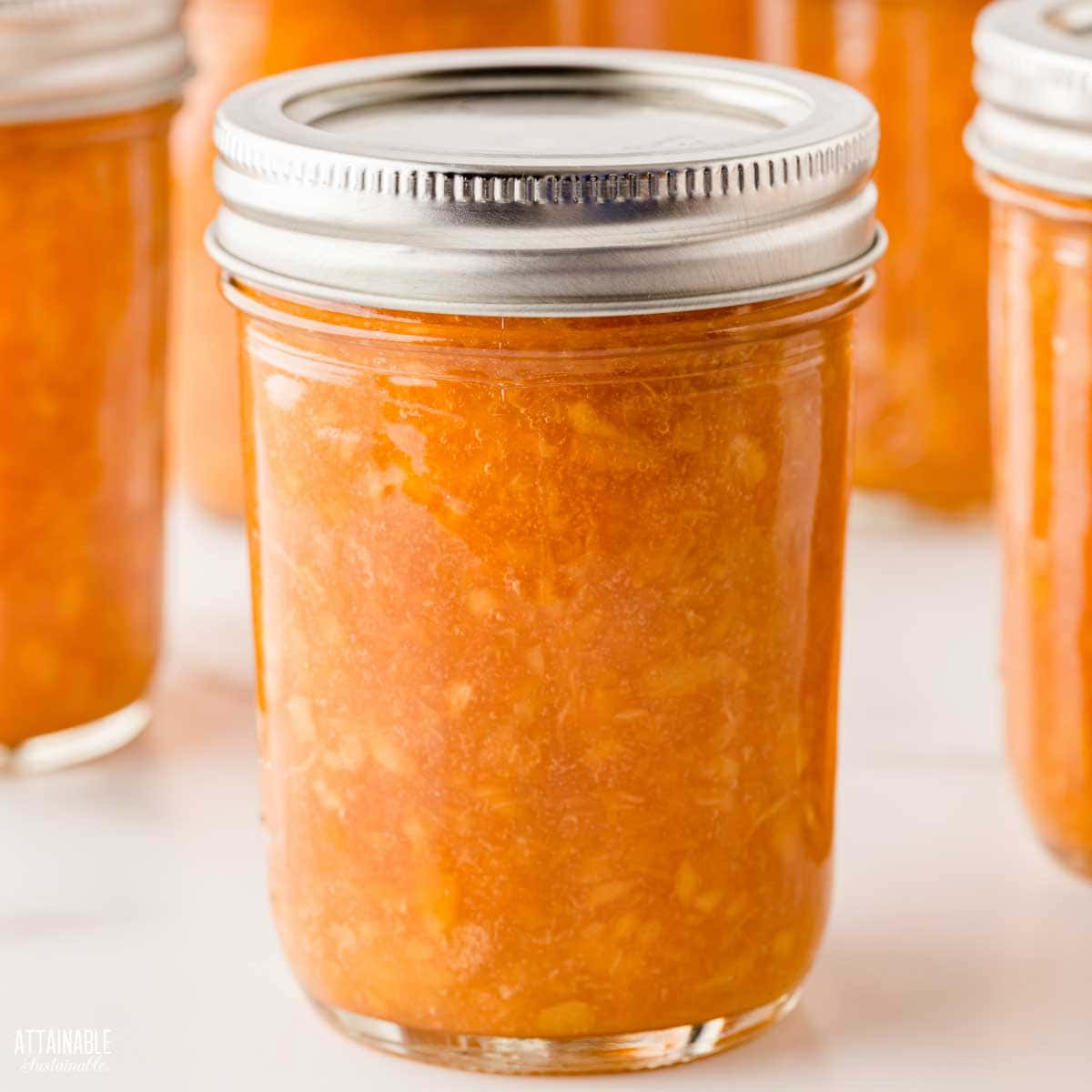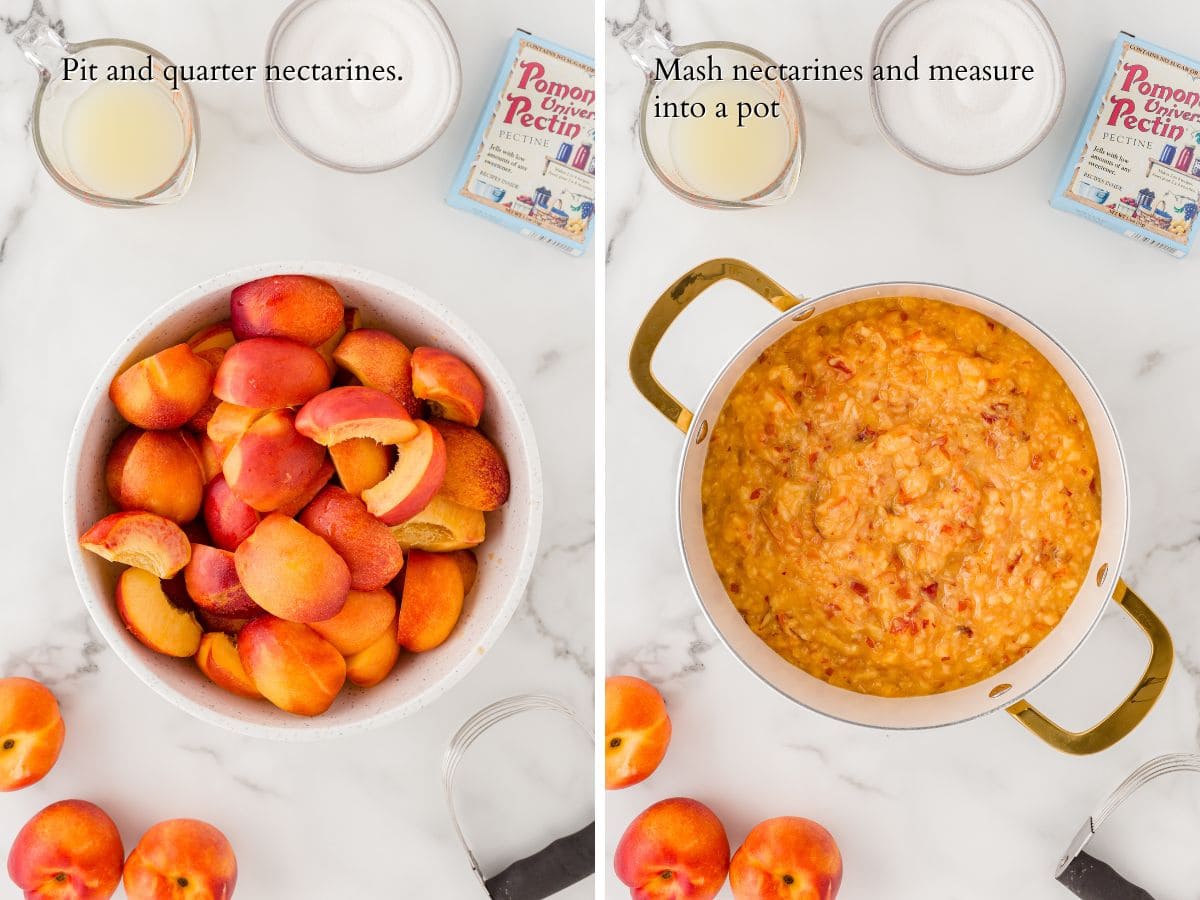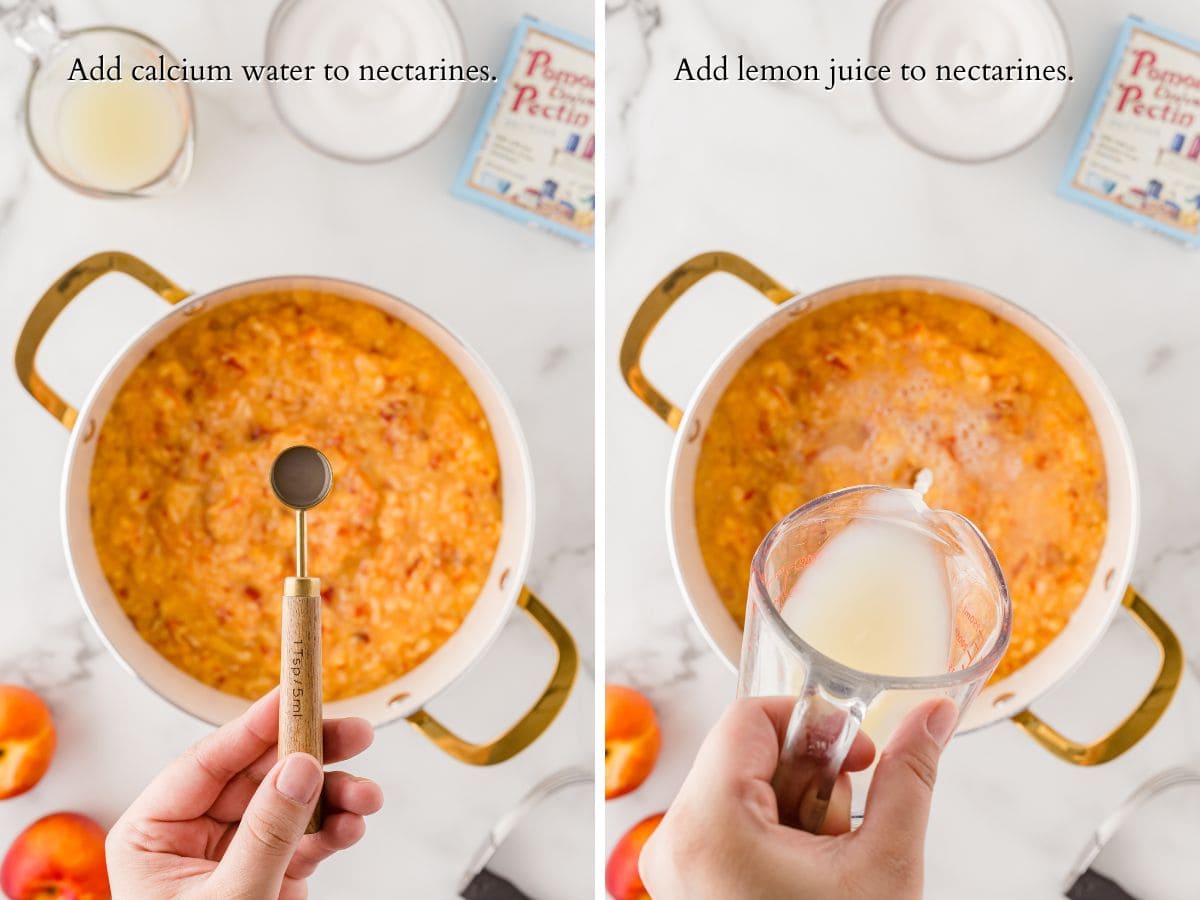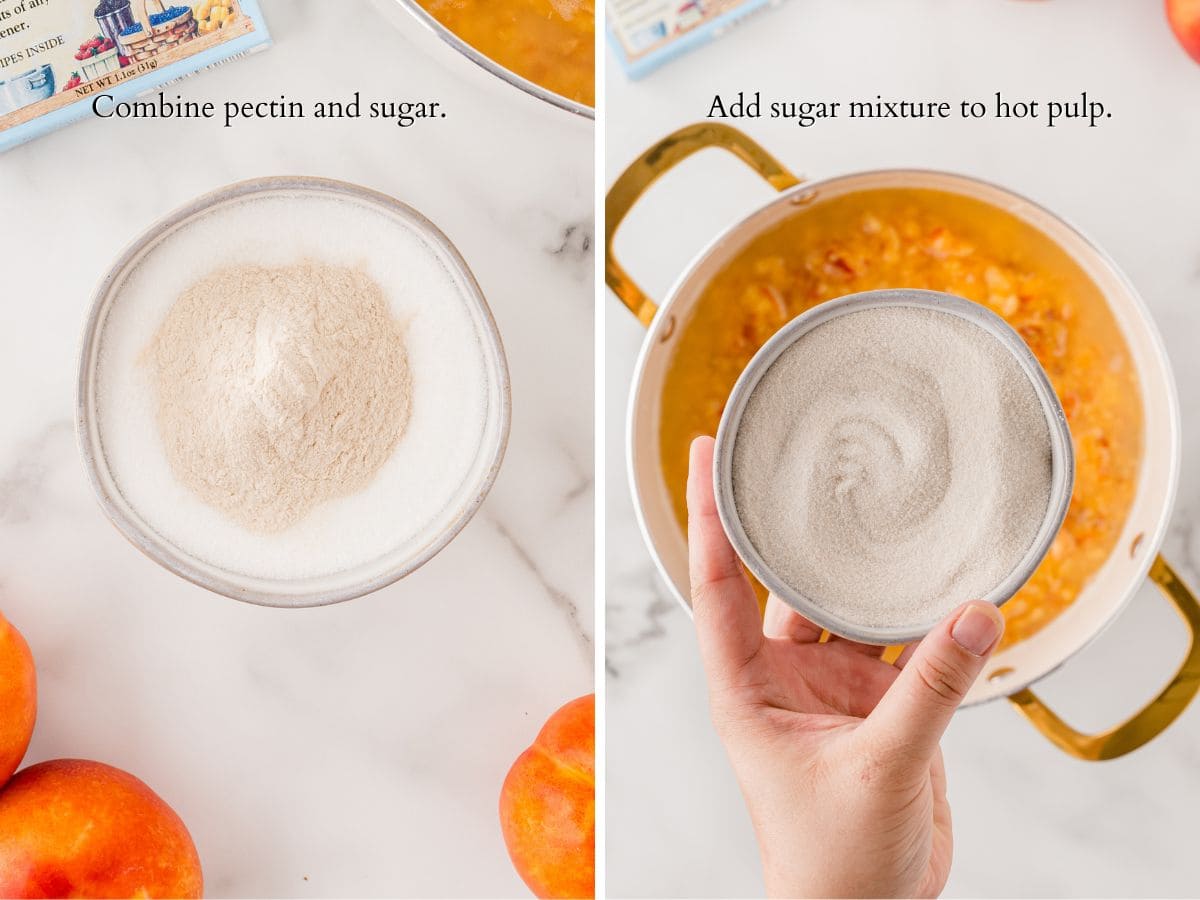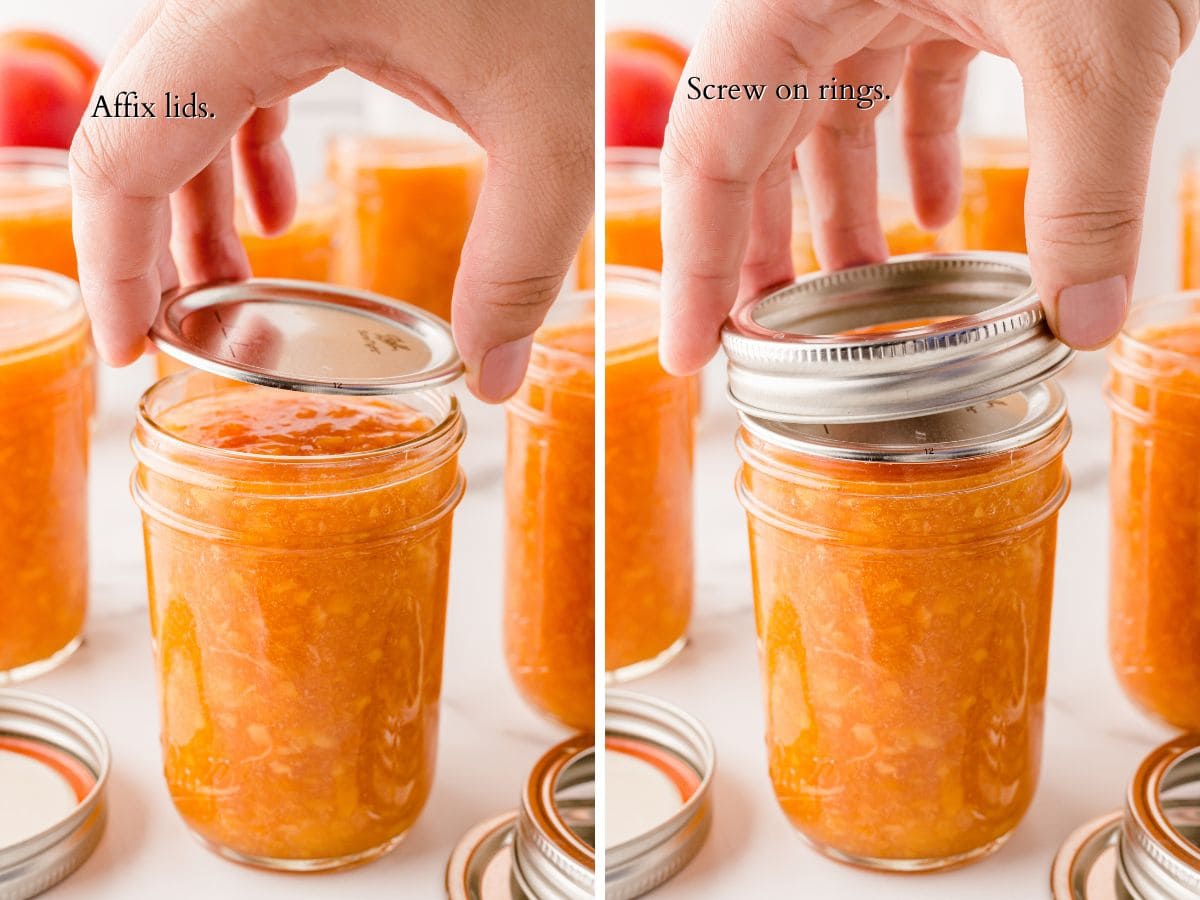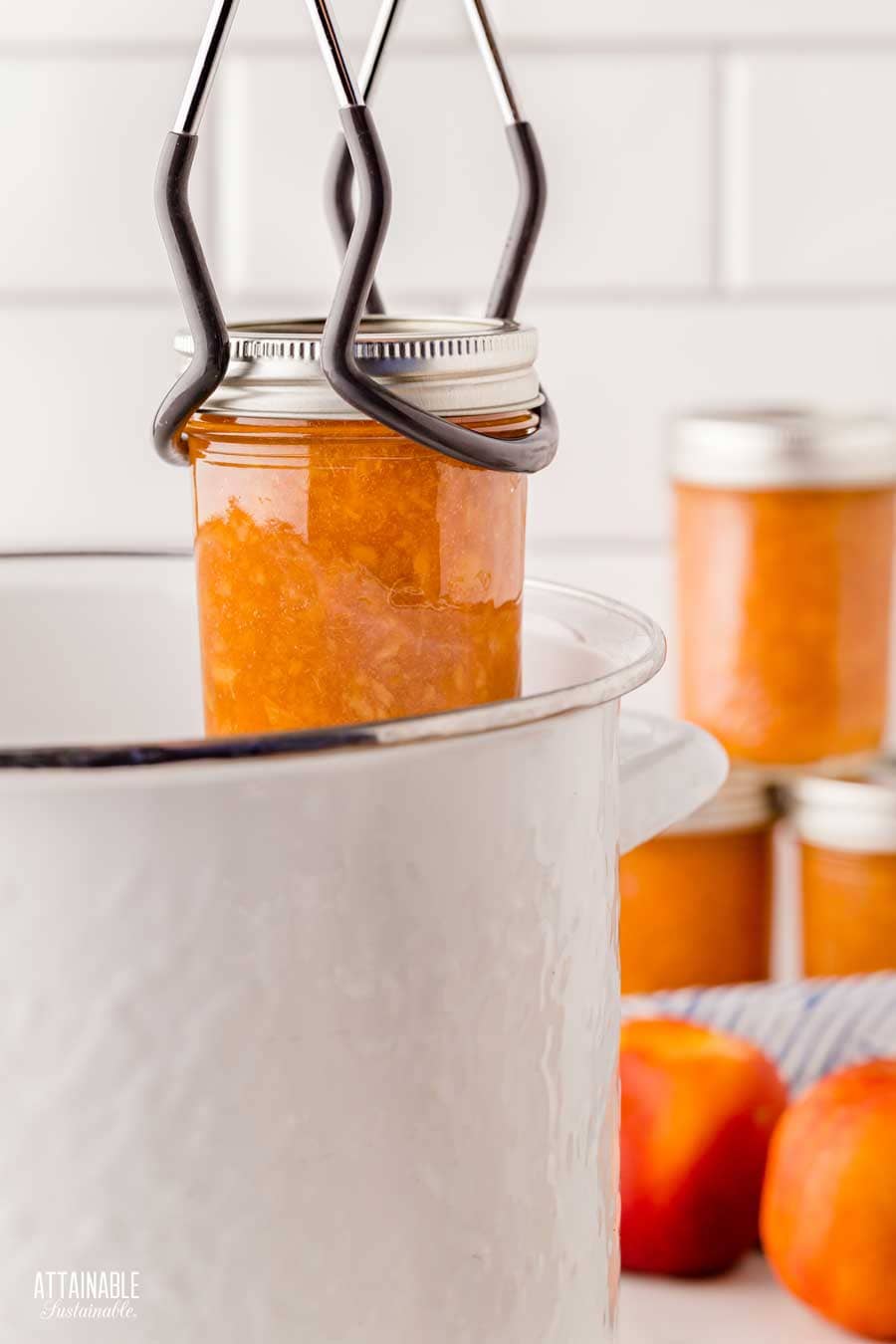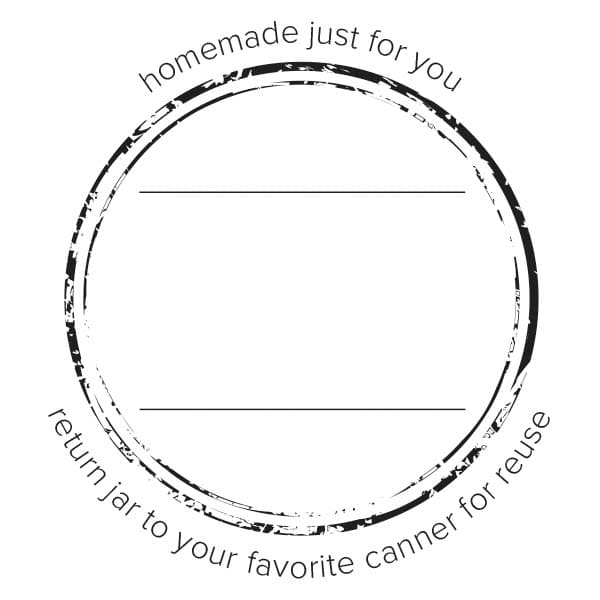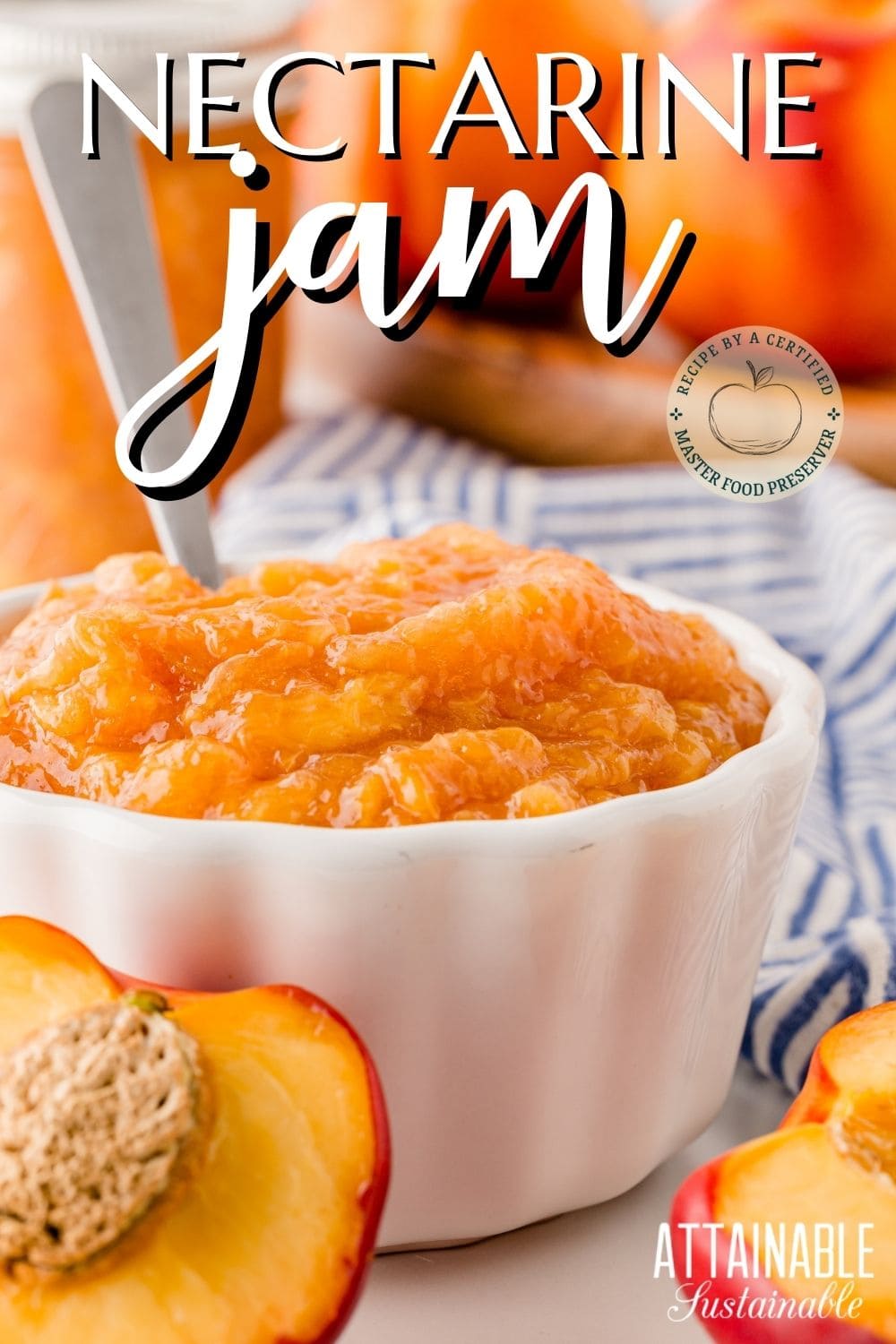One thing about grocery store shelves is that they don’t always offer up a huge selection. Case in point: nectarine jam. It’s not readily available commercially, but you can use this sweet summertime fruit to make up a batch of jam for your morning toast!
Sweet Nectarine Jam
One of my favorite reasons for canning nectarines is that I don’t have to peel them. That’s true for this thick and gooey jam, too. What a timesaver!
The Handcrafted Pantry

Ready to DIY your pantry with more wholesome ingredients? Check out my ebook, The Handcrafted Pantry! Filled with delicious recipes for some of your favorite condiments, snacks, and toppings, it’s the guide you need to start skipping packaged products and embrace homemade.
Ingredients
Nectarines – You’ll need 6-7 pounds of ripe nectarines to make this recipe. Use any type of yellow nectarine that you have readily available. A freestone variety will be easier to pit than a cling variety. (Read more about stone fruit.) Do not use white nectarines for this recipe; these fruit are less acidic than the yellow variety and can alter the pH of the recipe making it unsafe for canning.
Sweetener – This recipe calls for using two cups of sugar as the sweetener. If you’d prefer to use honey, use one cup of honey. (Honey is sweeter than sugar, so you can use less. )
Lemon juice: USDA preserving recipes all call for using bottled lemon juice. This assures that the acidity level in recipes is safe for canning.
Pectin – This recipe is made using Pomona’s Universal Pectin. This is the only pectin I use anymore as it allows me to use much less sweetener. The standard pectin brands use an obscene amount of sugar in my opinion, often requiring equal amounts of sugar and fruit! This product uses a low methoxyl method and calls for using two different ingredients, which are included in the box: pectin (the large packet) and calcium powder (the small packet). The dry pectin is mixed with the sweetener before being added to the fruit. The calcium is combined with water and added directly to the fruit.
5 Easy Steps to Transform Your Pantry!
Ready to switch from store bought to homemade? Let me help you make some changes! Grab my FREE five-part guide to getting started.
Making Jam
Wash and dry the nectarines. Cut roughly into quarters, then mash with a potato masher. Alternatively, you can pulse the fruit in a food processor to make pulpy chopped nectarines.
Measure the mashed nectarines into a large stockpot along with the lemon juice and calcium water.
Combine the pectin with the sugar, making sure it’s thoroughly combined.
When the nectarine mixture reaches a full rolling boil, add the sugar to cooking fruit, stirring for a minute or two to assure that the pectin is well distributed.
This recipe measured at a pH under 3.5, putting it well into the “safe” zone for water bath canning.
🍅 Safety First!
Canning is an excellent way to preserve food for the pantry, but there are some important safety considerations to keep in mind. The recipes on this site have been made following safe canning procedures by a certified Master Food Preserver.
- Know the difference between water bath canning and pressure canning. Low acid items must be pressure canned for safety.
- Altering ingredients may change the recipe’s pH, posing a safety issue. I highly recommend investing in pH paper to test your products for acidity level when canning. Note: For safe water bath canning, the Hawaii Master Food Preservers suggest a pH of 4.2 or lower in the tropics. In other regions, the recommended pH is 4.6 or lower.
- Use the proper jars and lids. Never reuse lids, with the exception of the Tattler or Harvest Right hard plastic lids that are intended for such a purpose.
- For more on canning equipment, please go here.
- Want to learn more? The National Center for Home Food Preservation is the go-to resource for safe canning information.
Canning the Jam
You’ll need special canning jars, lids, and rings to make this a shelf-stable product, but the process isn’t difficult.
Transfer hot jam into canning jars, leaving a quarter-inch headspace. Use a non-metallic knife or bubble tool to remove any air bubbles. Wipe the rims of the jars, removing any residue. Place the lids on and process them in a water bath canner. What this means is you’ll put the filled and sealed jars of jam into boiling water and heat them for ten minutes. This assures that the jars will seal well and kills off any potential bacteria in the jam mixture itself.
Use a jar lifter to remove the hot jars to a towel-covered countertop and allow to cool fully. As they cool, you’ll hear the little “tink” sound of the jars sealing. Store any unsealed jars in the fridge and use those first. (This is unusual, but it does happen once in awhile.)
Remove the ring from each sealed jar of peach preserves, rinse to remove any jam residue, and store at room temperature in a dark place such as the pantry. Opened jars should be kept refrigerated; they’ll last in the fridge for several weeks.
Head over here for more information about canning jams and jellies and even more jam recipes to make with summertime fruit!
Want to Skip the Canning Process?
You don’t have to can this jam. You can transfer it to the refrigerator if you’ll use it within several weeks. Or you can freeze it.
To make nectarine freezer jam, follow the instructions to make the jam. Instead of canning it, transfer jam to freezer containers allowing plenty of room for expansion. (Straight-sided canning jars work well; just allow an inch and a half headspace.)
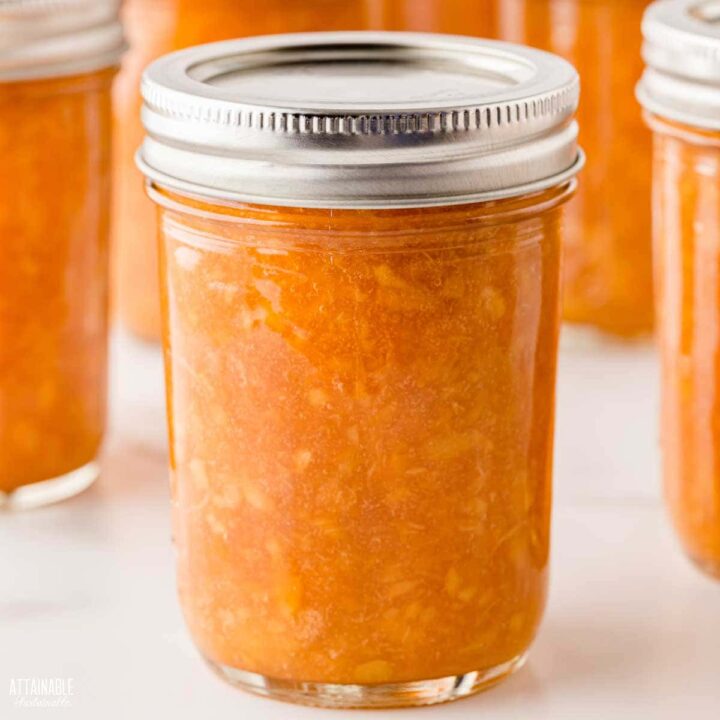
Homemade Nectarine Jam Recipe
This fruit-forward nectarine jam is an excellent addition to your pantry! Tasting the flavor of summertime in mid-winter? Winning!
Ingredients
- 6-7 pounds of nectarines (yellow)
- 8 teaspoons calcium water (from Pomona's Universal Pectin)
- 1/2 cup lemon juice (bottled)
- 2 cups sugar
- 6 teaspoons pectin powder (from Pomona's Universal Pectin)
Instructions
Pomona's Universal PectinPrepare for Canning
- Prepare the calcium water: Combine ½ teaspoon calcium powder (from the small packet in the box of Pomona’s pectin) with ½ cup water in a small jar. Screw on a lit and shake until well-combined. You'll have more than you need for this recipe. Store the excess in the refrigerator for use in making additional jam or jelly recipes.
- Wash the jars you'll use, making sure each is clean and free of nicks in the rim, which could impede sealing.
- Wash the lids and rings in hot soapy water. (If you're using non-Ball brand lids, prepare as suggested by manufacturer.)
- Place empty jars in a canning pot or large stock pot with enough water to cover by an inch or two, cover pot, and set on high heat. It can take awhile for the water to heat, so get it started before you begin making the recipe.
Make the jam
- Wash and dry the nectarines. Cut into quarters or rough chunks. No need to peel them.
- Mash nectarines coarsely with a potato masher or pulse in a food processor; measure 8 cups into a large pot. Add the prepared calcium water and lemon juice; stir to combine well.
- In a separate bowl, combine the honey with the pectin powder (the large envelope) until thoroughly combined.
- Bring mashed nectarines to a full boil. Add honey mixture, stirring vigorously for a couple of minutes to dissolve the pectin. Return to a full boil, boil for one minute, and remove from heat.
Canning nectarine jam
- Ladle hot jam into half-pint jars to within a quarter inch of the rim. A canning funnel makes this easy.
- Wipe jar rims to remove any jam that may have spilled. A clean rim is essential to a good seal.
- Set jar lids in place. Screw bands on finger tight.
- Use a jar lifter to gently submerge jars into the hot water bath. Be sure to place a wire rack in the bottom of the pot to prevent the jars of peach jam from sitting directly on the bottom. Water should cover the top of the jars by an inch or two. The water will cool somewhat in reaction to the addition of the jars. Return the water to a low boil and then set the timer.
- Process in a boiling water bath for 10 minutes. Add a minute to the boiling time for every 1,000' above sea level.
- Check seals. Lids should be solid and pulled down tight. (if they flex and pop, the jar didn’t seal; put unsealed jars in the refrigerator and use those first).
- Remove rings and wash outsides of jars. Store in a cool, dry place.
Notes
This recipe is made using Pomona’s Universal Pectin. This is the only pectin I use anymore as it allows me to use much less sweetener. The standard pectin brands use an obscene amount of sugar in my opinion, often requiring equal amounts of sugar and fruit! This product uses a low methoxyl method and calls for using two different ingredients, which are included in the box: pectin (the large packet) and calcium powder (the small packet). The dry pectin is mixed with the sweetener before being added to the fruit. The calcium is combined with water and added directly to the fruit.
Boiling lids or heating above 180°F as once recommended can damage the sealing compound.
Do not use white nectarines for this recipe; these are less acidic than the yellow variety and can alter the pH of the recipe making it unsafe for canning according to the National Center for Home Food Preservation.
SOURCE: Adapted from guidelines provided by Pomona's Universal Pectin.
